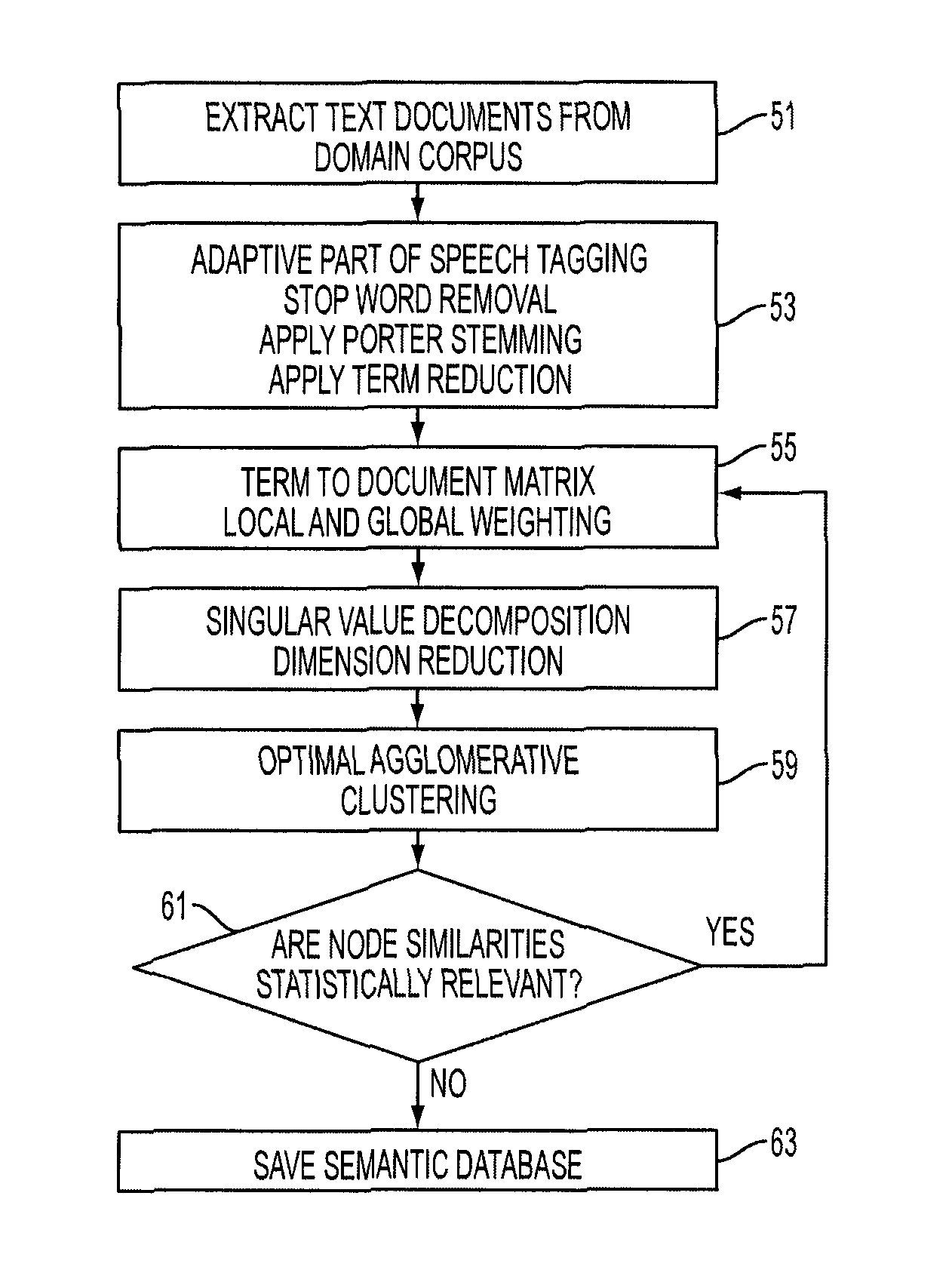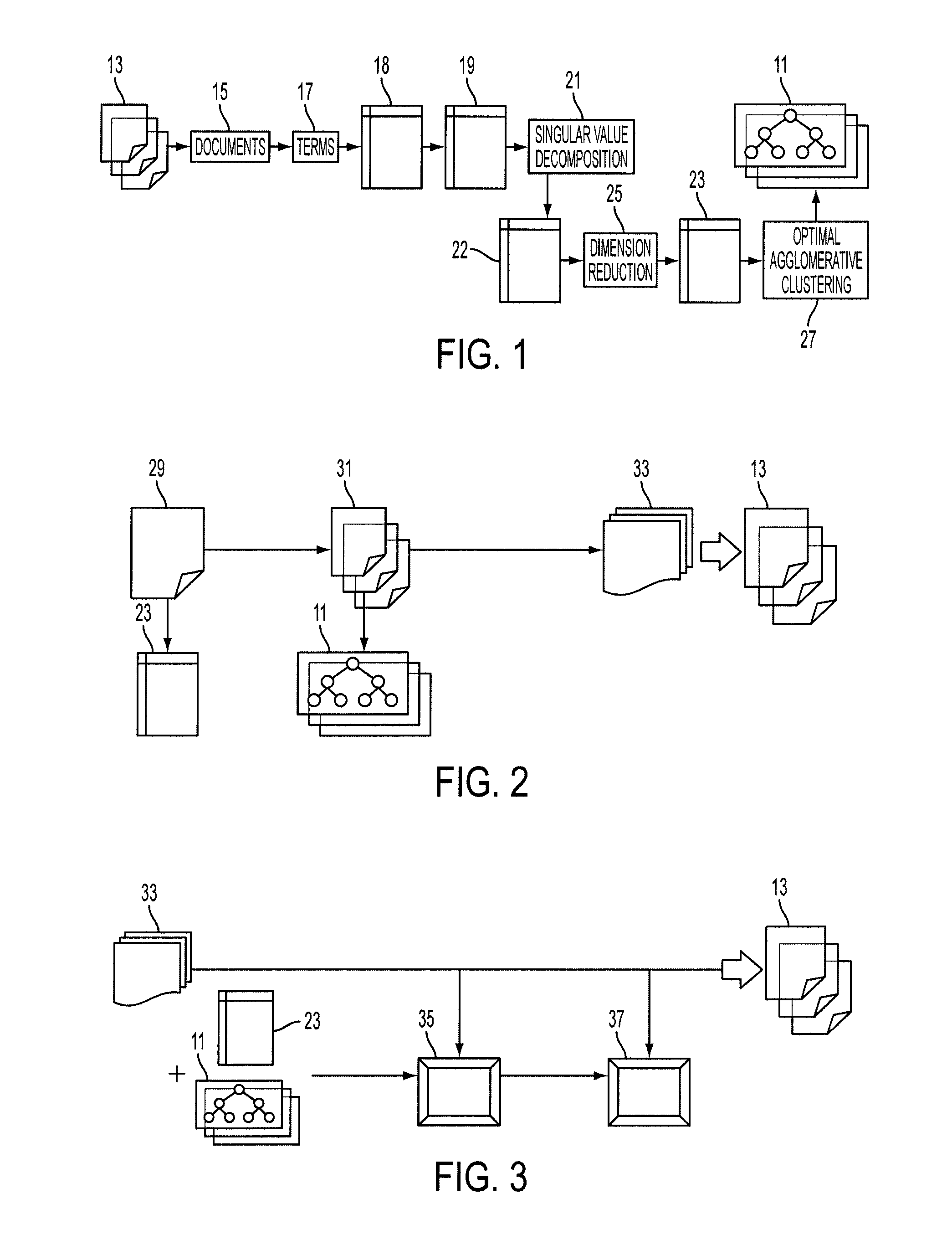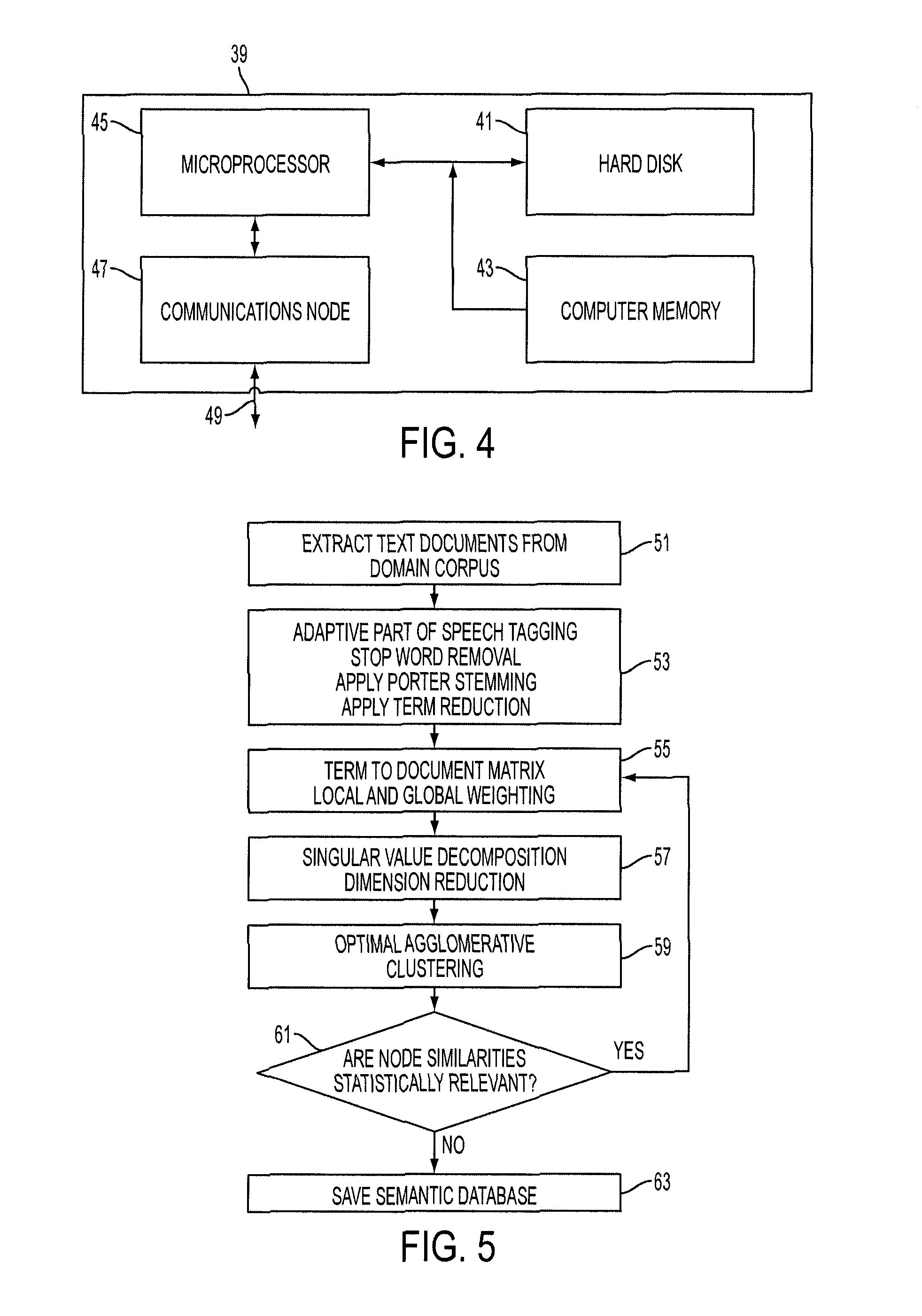System and method of structuring data for search using latent semantic analysis techniques
a semantic analysis and data technology, applied in the field of system and method of structuring data for search, can solve the problems of inability to retrieve the desired information, inconvenient search, and inability to account for two primary search methods, so as to achieve efficient and reliable search, the effect of finding the most relevant topical information
- Summary
- Abstract
- Description
- Claims
- Application Information
AI Technical Summary
Benefits of technology
Problems solved by technology
Method used
Image
Examples
Embodiment Construction
[0056]FIGS. 1-3 represent an overview of one embodiment of the kPOOL invention. FIG. 1 displays kPOOL's process of forming a hierarchy of clustered documents 11. kPOOL accesses a domain corpus 13 representing textual material. kPOOL parses the domain corpus 13 into a plurality of documents 15. kPOOL parses the domain corpus 13 by segmenting the length of the domain corpus' 13 textual material into distinct lengths of text. Each distinct length comprises a document 15. kPOOL then parses each document 15 into a series of terms 17 corresponding to each document 15. kPOOL forms a term-to-document matrix 18 that correlates each document 15 with the series of terms 17 corresponding to each document 15. kPOOL then forms a weighted term-to-document matrix 19 using global and local weighting. kPOOL performs a singular value decomposition 21 on the weighted term-to-document matrix 19. The singular value decomposition 21 creates three orthogonal matrices: left and right singular vector matrice...
PUM
 Login to View More
Login to View More Abstract
Description
Claims
Application Information
 Login to View More
Login to View More - R&D
- Intellectual Property
- Life Sciences
- Materials
- Tech Scout
- Unparalleled Data Quality
- Higher Quality Content
- 60% Fewer Hallucinations
Browse by: Latest US Patents, China's latest patents, Technical Efficacy Thesaurus, Application Domain, Technology Topic, Popular Technical Reports.
© 2025 PatSnap. All rights reserved.Legal|Privacy policy|Modern Slavery Act Transparency Statement|Sitemap|About US| Contact US: help@patsnap.com



